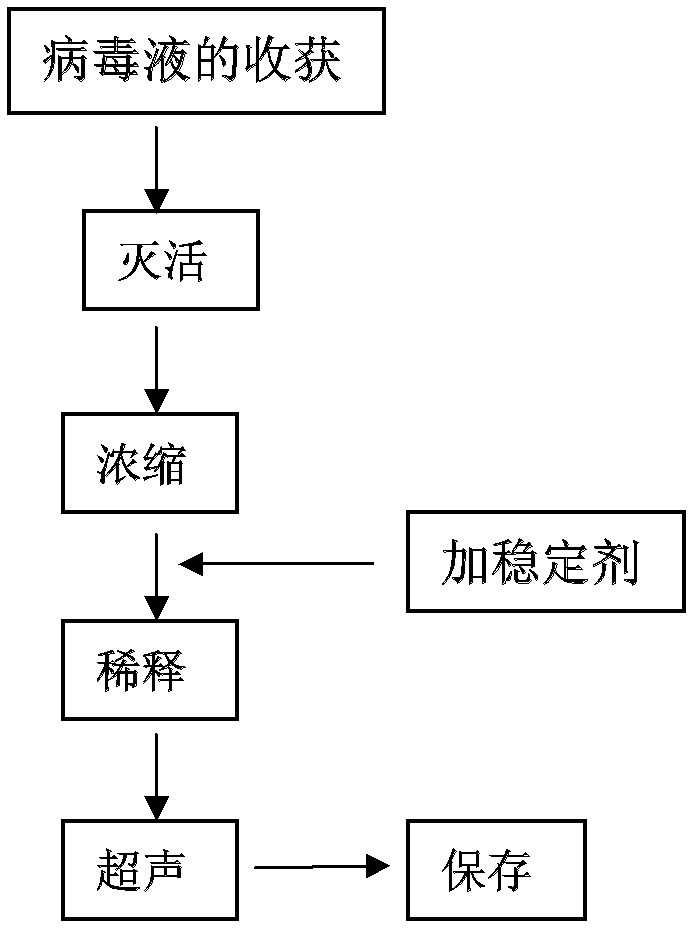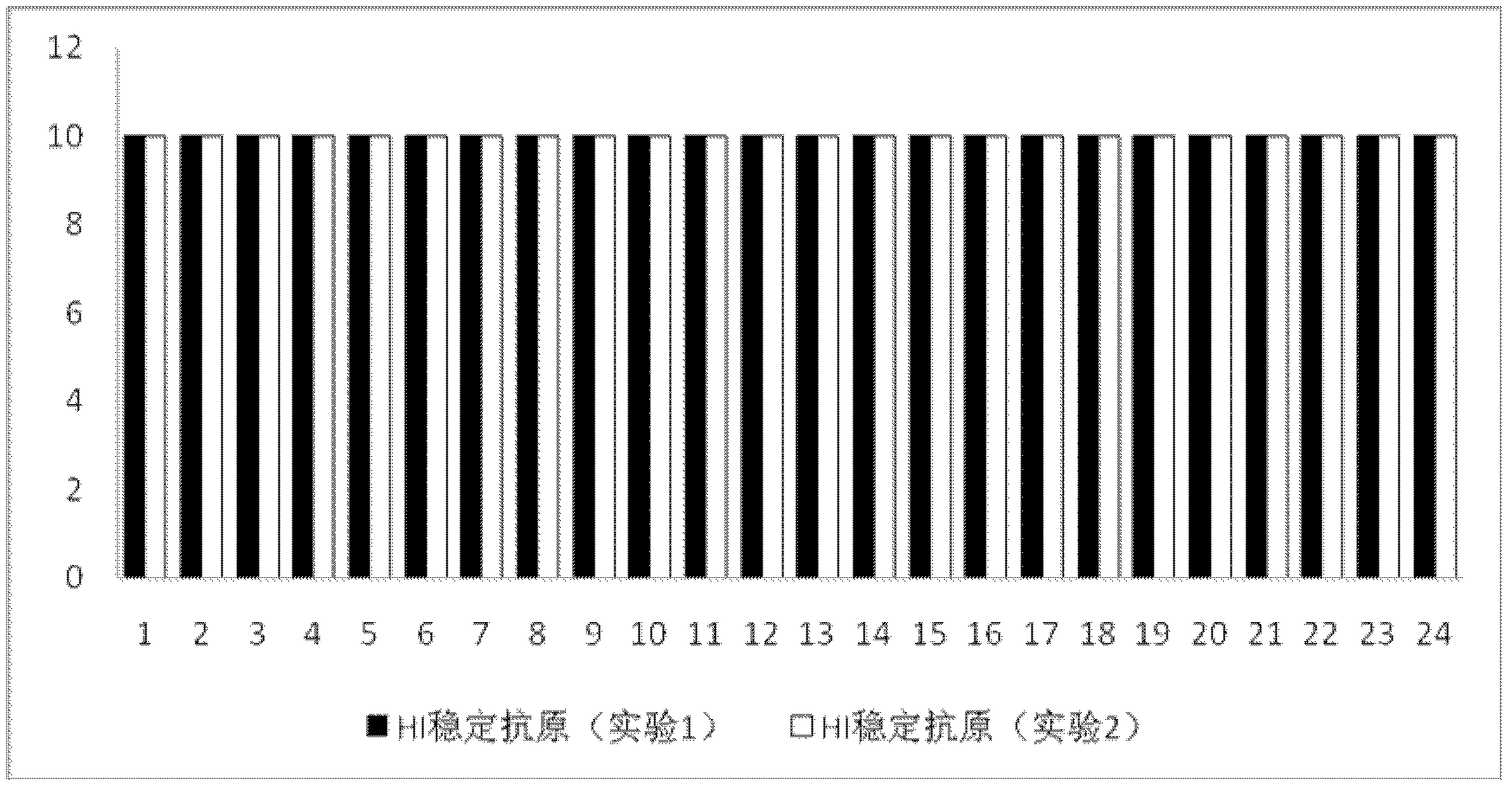Preparation method of newcastle disease HI antigen
A technology for Newcastle disease and antigens, applied in biochemical equipment and methods, virus antigen components, antiviral agents, etc., can solve the problems of lack of safety, stability, and easy storage of antigens in diagnostic antigens, and achieve stable and convenient HA hemagglutination activity Effect of saving and reducing workload
- Summary
- Abstract
- Description
- Claims
- Application Information
AI Technical Summary
Problems solved by technology
Method used
Image
Examples
Embodiment 1
[0031] PEG4000 from Beijing Xinjingke Biotechnology Co., Ltd. was used as the main component of the stabilizer. The preparation steps of HI stable antigen are as follows:
[0032] (1) SPF chicken embryos (provided by Beijing Meria Weitong Experimental Technology Co., Ltd.) were inoculated with poison
[0033] Under sterile conditions, the Newcastle disease La Sota strain virus was diluted to contain 10 6 EID5 0 / 0.1ml, inoculated with well-developed SPF chicken embryos aged 9-11 days, 0.1ml / piece, sealed with wax after inoculation.
[0034] (2) Culture and Embryo
[0035] After inoculation, the SPF chicken embryos were incubated at 37°C, and the eggs were illuminated once every 24 hours, and the dead embryos were discarded. After that, the eggs were illuminated once every 6 hours, and the dead chicken embryos were taken out in time and placed at 4°C. ℃ overnight.
[0036] (3) Harvest and HA detection
[0037] Harvest chicken embryo allantoic fluid under aseptic environme...
Embodiment 2
[0051] Using PEG8000 from Beijing Xinjingke Biotechnology Co., Ltd. as the main component of the stabilizer, the preparation process steps of HI stabilized antigen are as follows:
[0052] (1) Inoculation of SPF chicken embryos
[0053] Under sterile conditions, the Newcastle disease La Sota strain virus was diluted to contain 10 6 EID 50 / 0.1ml, inoculated with well-developed SPF chicken embryos at the age of 9-11 days, 0.1ml / piece, sealed with wax.
[0054] (2) Culture and Embryo
[0055] After inoculation, the SPF chicken embryos were incubated at 37°C, and the eggs were illuminated once every 24 hours, and the dead chicken embryos were discarded. After that, the eggs were illuminated once every 6 hours, and the dead chicken embryos were taken out in time and placed at 8°C until 96 hours. ℃ overnight.
[0056] (3) Harvest and HA detection
[0057] Harvest chicken embryo allantoic fluid under aseptic environment, and do sterility test at the same time. Detection of HA ...
Embodiment 3
[0071] Inactivation test: After diluting the inactivated allantoic fluid in Example 1 and Example 2 by 1:10000 times, inoculate 11-day-old SPF chicken embryos through the allantoic cavity, 0.1 mL per embryo, and continue at 37 ° C after inoculation After hatching for 5 days, observe the development of the chicken embryo and detect whether the allantoic fluid of the chicken embryo has hemagglutination activity. The harvested chicken embryo allantoic fluid was blindly passed on SPF chicken embryos for three generations, and the chicken embryo allantoic fluid had no hemagglutination activity. It shows that the antigen prepared by the invention is completely inactivated, safe and non-toxic.
PUM
 Login to View More
Login to View More Abstract
Description
Claims
Application Information
 Login to View More
Login to View More - R&D
- Intellectual Property
- Life Sciences
- Materials
- Tech Scout
- Unparalleled Data Quality
- Higher Quality Content
- 60% Fewer Hallucinations
Browse by: Latest US Patents, China's latest patents, Technical Efficacy Thesaurus, Application Domain, Technology Topic, Popular Technical Reports.
© 2025 PatSnap. All rights reserved.Legal|Privacy policy|Modern Slavery Act Transparency Statement|Sitemap|About US| Contact US: help@patsnap.com



